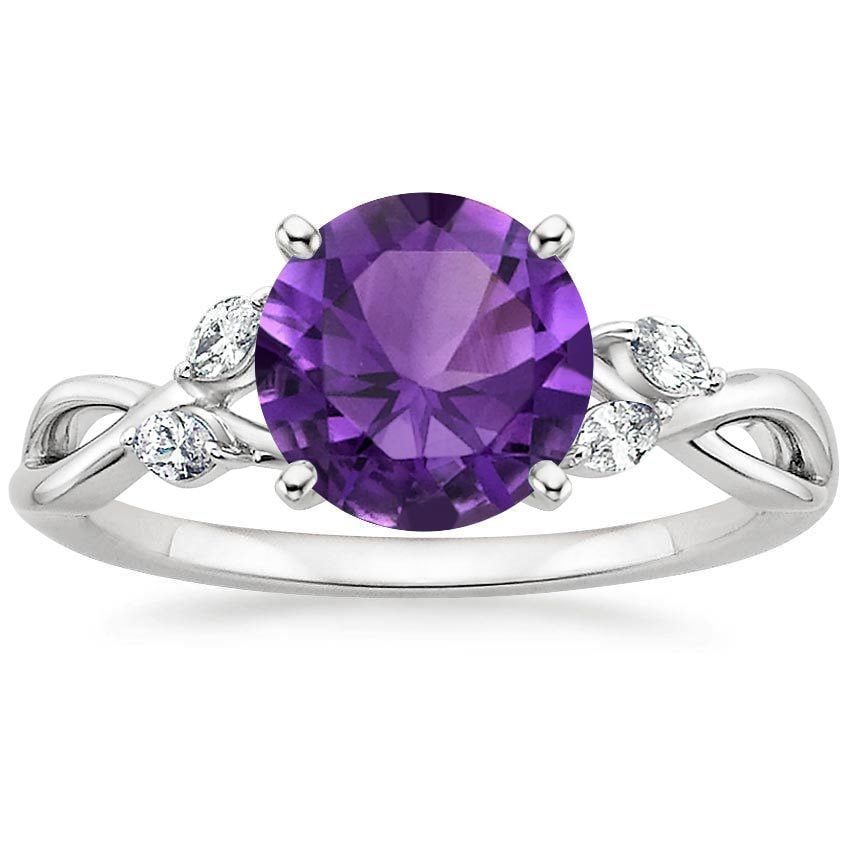
Today, modern mining occurs at large scale in Brazil, Zambia, Bolivia, and Uruguay, with small mines in Madagascar, Sri Lanka, Namibia, Kenya, Mexico, India, Canada, and Arizona. By the 1950s, Zambian mines revealed rich caches of superior-quality amethyst, with popular opinions that these African deposits were finer than any others because of their rich purple, blue, and red tones. Amethyst deposits in Brazil range from light violet to stunning medium purple. With the discovery of untapped amethyst sources in the Maraba, Rio Grande do Sul, and Pau d’Arco regions of Brazil in the 1800s, amethyst went from a rare precious stone to a reliably high-quality semi-precious stone. The earliest known mining locations were in the Ural Mountains of Russia and the Hunsruck Mountains of Idar-Oberstein in Western Germany, with mining lasting from ancient times to the 1800s, when deposits ran dry.

Although amethyst is not as hard-wearing as a ruby or sapphire, its remarkable structure lends an excellent surface for long-lasting and intricate carvings that last through the ages. Physical examples of amethyst jewelry from this time period, especially pendants and carved amulets, survive today. Amethyst appears in ancient records from Egypt and Greece. Ancient Greeks and Romans became enamored with the color of the gemstone, driving up demand. When you look at the history of amethyst, you find an enduring love for this purple quartz crystal. You should also take care when storing your amethyst jewelry because strong UV light can lighten amethyst’s rich purple tones. Amethyst measures 7 on the Mohs scale, making it long-lasting but prone to scratches on exceptionally hard surfaces. Some amethyst stones have a mixture of sister quartz citrine and are called ametrine, while others, called prasiolite, have more iron in them and turn green. These gems can have minor brownish or rust spots or slight inclusion markings that can affect the value. The brighter and more vivid and consistent the color, the more desirable and prized the amethyst will be. Most amethyst gemstones are a richer purple at the top, where iron concentrates, and light purple to clear at the base. Some colors of amethyst have hints of red or blue as well. This semi-precious gem has a natural color range from the palest lilac to a dark purple violet. You might know February’s birthstone for its vivid medium purple hues, but you’ll also fall for the birthstone in its other color ranges.

This is when it takes on those yellows, greens, and - in the case of amethyst - dazzling purples. For quartz to display its colors, though, it needs radiation exposure. You might also see amethyst and other types of quartz (like citrine, prasiolite, or ametrine) in geodes, where they grow from the inside of hollow rocks to form incredible crystalline mosaics.

Amethyst gemstones are most often found in igneous and other volcanic rocks, especially basalt, but they can occur in metamorphic and sedimentary rocks as well. This purple gem is made of silicon dioxide, also called silica, with trace amounts of iron and other minerals. In this latest edition of the birthstone series, we take an in-depth look at the eye-catching amethyst and see how it came to be so beloved.Īmethyst is a semi-precious variety of quartz. Bolstered by passionate purples and lush lilacs, those born in February are fortunate to call amethyst their birthstone. Winter months may bring colder temperatures and less daylight, but February’s birthstone offers an attractive sparkle to brighten those dark winter days.



 0 kommentar(er)
0 kommentar(er)
